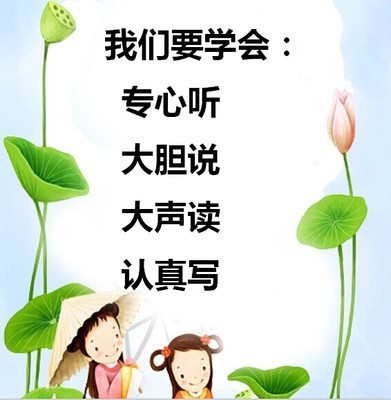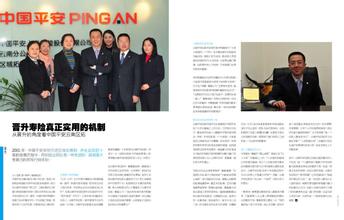从心理学角度认识自己 从心理学角度分析广告宣传技巧
The phenomenon that some children can blurt out many advertising lines as fluently as they recite 300 pieces of Tang poetry is unsurprising nowadays. Indeed, modern people are surrounded by overwhelming advertisements, which crowd on TV, stick to buses, prop out from the internet, and protrude from buildings or shelves. We may try to ignore their existence but only find ourselves choose the brand we hear or see most from advertisements. “Propaganda Techniques in Today’s Advertising”, written by Ann McClintock, clarifies advertising tools by offering seven basic types of propaganda techniques. Through the analysis of concrete samples, it is not hard to find that these techniques work effectively as they skillfully master people’s psychologies of pursuit of owning goodness, custom of following group, and sub consciousness of being special. Usually, charming features of goodness are like magnet, attracting people of different genders, races and social classes alike. Propaganda techniques of Glittering Generalities, Transfer and Testimonial firmly seize this psychological character. Glittering Generalities allow advertisers attach attractive words and phrases to the products (McClintock 652). Slogan “Happiness is a cigar called Hamlet” is proposed by Hamlet cigar, which aims to link the concept of feeling happiness to smoking the Hamlet cigar. Similarly, Pear’s Soap has its slogan of “Preparing to be a beautiful lady” (wangchao), which attracts women who want to be beautiful to use soap of Pear’s brand. And De Beers Consolidated Mines carries out its slogan, “A diamond is forever” (wangchao) to define the word “forever”, thus technically arouses people’s inner desire of owing foreverness. All the above slogans adopt certain glittering word: “happiness”, “beautiful” or “forever” to stimulate audience to more consumption on obtaining goodness. Transfer technique explores deeper connotation of goodness than Glittering Generalities. Deriving from Chinese long feudal history, the emperor symbolizes nobleness and elegance, therefore, great number of advertisements take Transfer technique to associate emperor’s quality with products. For instance, Instant noodles named “spicy emperor” produced by Jin Mai Lang Food Company Ltd. have a typical transferring advertisement. The famous actor Tang Guoqiang who often plays the role of emperor comes onto the screen with a bowl of noodles as an emperor as usual. After had some noodles, he smiles, nods and commends the taste, then the advertising line goes, “Even the emperor says that the noodles are great!” This advertisement takes advantage of people’s admiration and longing of leading a high-quality life just as the emperor used to do. The difference between Transfer technique and Testimonial technique is that the latter emphasizes or even exaggerates the excellence and qualities of celebrities. Only to name a few, famous sports star Liu Xiang is the spokesperson of Amway Nutrilite, the hero in the Prison Break, Wentworth Miller is the spokesperson of Corvette, Camaro and Cruze, new style of Chevrolet, and Hong Kong Kung Fu action star Jackie Chan works as a spokesperson for Cannon 500D promotion. In brief summary, the propaganda techniques of?Glittering Generalities, Transfer and Testimonial all target at public’s good wishes of happiness, youth, beauty, health, success, wealth, etc. The second category of propaganda techniques focuses on human being’s psychology of staying in one group. Techniques of Plain Folks and Bandwagon use this nature from daily commonness and modern current aspects separately. Plain Folk technique notes that if all the people were in the same boat, they would reach a consensus easily. Therefore, as long as a product gets the approval of a small group on the boat, it would likely to be accepted and welcomed by all the people on the boat. Specifically, the gifted movie star and director Xu Jinglei becomes the spokesperson of Lipton in promoting its black tea. The advertising scene starts at a working place, then Xu starts to make her a cup of tea and says, “While having a break, I would like to have a cup of tea. I also would like to add some sugar. I like this kind of taste, what about yours?” The advertisement builds a common working environment to make it like ordinary life everyone has, and Xu’s having a break and making a cup of tea are simple but real. Moreover, the last inviting question “what about yours?” straightly targets at public sense of being one of them. The Bandwagon technique arouses group psychology more apparent as the slogan and the scene are always accompanied by many people. For example, McDonald has advertised to children with a line, “Put a smile on, put a smile on. Everybody come on, put a smile on”. In this way, children are deeply attracted as everybody here smiles happily, so why not join them and come to the same place to enjoy pleasure. Moreover, assertion of choosing to drink Pepsi is “the choice of a new generation” can hardly fail to draw youth’s attention. Everybody would like to be in the new generation for they all have the inner motion of catching up with the current and reluctance of being left behind. Due to human being’s social nature, Plain Folks and Bandwagon can always reach propaganda aims. Lastly, in spite of taking advantage of self-improving side of people, advertisers also observe their psychology of inner belief of being different from peers. Name Calling and Card Stacking are trying to build a specially made product and a false but glorious image to attract consumers’ attention. A euphemistic way of Name Calling is adopted by John Deere, a company offering agricultural, residential, commercial parts, etc. The slogan, “Nothing runs like a Deere”, indicates that all the other machines cannot compete with the Deere brand and only Deere is the number one. Cosmetics firms also take Name Calling as a forceful way of promotion. L’Oréal tells that, “Because I’m worth it” (Wikipedia), while Maybelline?announces that, “Maybe she’s born with it – maybe it’s Maybelline” (Maybelline). Both slogans make consumers feel that these brands produce extraordinary products, and they must occupy certain kind of quality to deserve having them. Differ from Name Calling, Card Stacking tells half of the truth, distorts some evidence and sets up false target to lure consumers’ attention in believing some ideas. These ideas are so richly furnished that the consumers think they understand, while they actually do not. This point gets a good illustration from the slogan of Coca-Cola, “Things go better with Coca-Cola”. People with critical thinking would like to ask how to define the degree and concept of “better”, but most audience are led to the mistaken idea that drinking Coca-Cola will improve life quality. Similar slogans like “Take TOSHIBA, take the world” (Toshiba), “We bring good things to life” (General Electric)?and “Think different” (Apple Computer) all offer vague concepts in intriguing consumers’ interest to obtain something they do not truly understand. Although Name Calling and Card Stacking do not set consumers as direct receivers, they are successful in tempting consumers to swallow the bait. In conclusion, the seven basic propaganda techniques proposed by Ann McClintock all target people’s psychological needs or basic nature. They take great effect in leading fashion, affecting people’s choices, and even influencing their ways of thinking. In addition, skillful advertisers sometimes combine these techniques to make consumers feel irresistible to buy the products. However, when people know these propaganda techniques make use of their psychology of good wishes, group conformity and self-awareness; they can figure out what on earth they want to buy rather than follow advertisements lead. Works Cited Maybelline. November 15th 2012.. McClintock, Ann. “Propaganda Techniques in Today’s Advertising.” College Writing Skills with Readings. Ed. John Langan. Beijing: Foreign Language Teaching and Research Press, 2006. Wangchao. July 17th 2012. Wikipedia: the free encyclopedia. November 21st 2012.
更多阅读

在教育教学过程中,如何能够更好的认识自己接纳自己,使自己有更 怎么更好的认识塔吊
1.正确的认识自己,悦纳自己。对于教师来说,要调整好自己的心理状态,要全面的认识自我,既要看到自己的优点和长处,又要看到自己的缺点和不足,认识自我不能孤立地去评价,应该放在社会中去考察,每个人生活在世上都有自己的独到之处,都有他人所不

结合自身的教学实践,谈一谈如何能够更好的认识自己接纳自己,使 认识自我 接纳自我
结合自身的教学实践,谈一谈如何能够更好的认识自己接纳自己,使自己有更多的时间和精力从事教研、教学,以充沛的精力和饱满的情感促进学生的健康成长?云县爱华完小杨宝华这次培训在教师职业中有这么两句话:教师重要的是要明确认识自己从

消费心理学案例分析 消费心理学案例教学网
消费心理学案例分析案例——“佳佳”和“乖乖”的不同命运 “佳佳”和“乖乖”是香脆小点心的商标,曾经相继风靡20世纪70年代的台湾市场,并掀起过一阵流行热潮,致使同类食品蜂拥而上,多得不胜枚举。然而时至今日,率先上市的佳佳在轰

广告心理学案例分析 消费者对广告信息知觉的心理学分析
消费者对广告信息知觉与一般的信息知觉有所不同,因为消费者对广告所形成的知觉是经过广告人精心策划的,即要在有限的时间、有限的版面内提供的有限的信息中,让消费者头脑中形成广告人所期望的对其所传播的广告商品的整体印象。从一定

评价机制 从广告心理角度看广告效果评价机制的变化
广告心理学是研究广告与受众(消费者)相互作用的心理学规律。广告心理学规律主要有两条:一是广告信息传播的心理学规律。它要求消费者能接触到广告(物理距离要小)并能按广告策划的意图(选择性知觉、注意和学习)理解广告。基于这一规律广告
 爱华网
爱华网